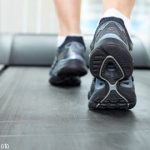Foot pain, which affects an estimated 24% of the adult population, is even more prevalent in patients with arthritis. Although treatment of foot problems remains challenging, research is improving our understanding of the mechanisms, evaluation, and management of foot pain.
Rheumatology professionals heard the latest information about this common symptom during an ARHP panel session titled, “Foot Structure, Footwear, and Foot Pain: Translating Evidence into Practice,” which was presented at the 2011 ACR/ARHP Annual Scientific Meeting here in November. [Editor’s note: This session was recorded and is available via ACR SessionSelect at www.rheumatology.org.]
A multidisciplinary panel, consisting of a scientist, an epidemiologist, and a physical therapist, stressed that foot pain must be treated.
“In the last 10 years, there has been a boom of studies looking at the population burden of foot pain,” said epidemiologist Marian T. Hannan, DSc, MPH, associate professor of medicine at Harvard Medical School and a scientist at Hebrew SeniorLife’s Institute for Aging Research in Boston, Mass. “Foot pain is a significant burden across various populations.”
Consequences of foot pain can include disability, especially difficulties in standing and walking, said Dr. Hannan.
People with severe foot pain have a much higher risk of falls than do people with mild or no foot pain, she said, summarizing new research findings presented at the ACR/ARHP Combined Epidemiology Session by her coauthor, Alyssa B. Dufour, MA, of Hebrew SeniorLife. More intervention studies to reduce falls related to foot pain are “desperately needed,” Dr. Hannan comments.
Other factors may reduce function in people with foot pain. She highlighted recently published research, which suggests that functional performance in people with foot pain is worse in those who are obese, even after controlling for relevant factors.1
Shoes and Foot Pain
Research also shows a link between foot pain and past footwear.2 “Older women who said they usually wore athletic shoes were 67% less likely to have pain in the hindfoot than women who wore other types of shoes,” said Dr. Hannan, a study coauthor.
This population-based study also found that most women have worn footwear with poor biomechanical support, such as sandals, slippers, and high heels—classified as “poor” shoe types in the study. Only 2% of men reported having worn “poor” shoes, and men showed no relation between shoe type and foot pain. The study found that most people change their shoe habits when they have foot pain, which Dr. Hannan said is evidence of modifiable behavior.


